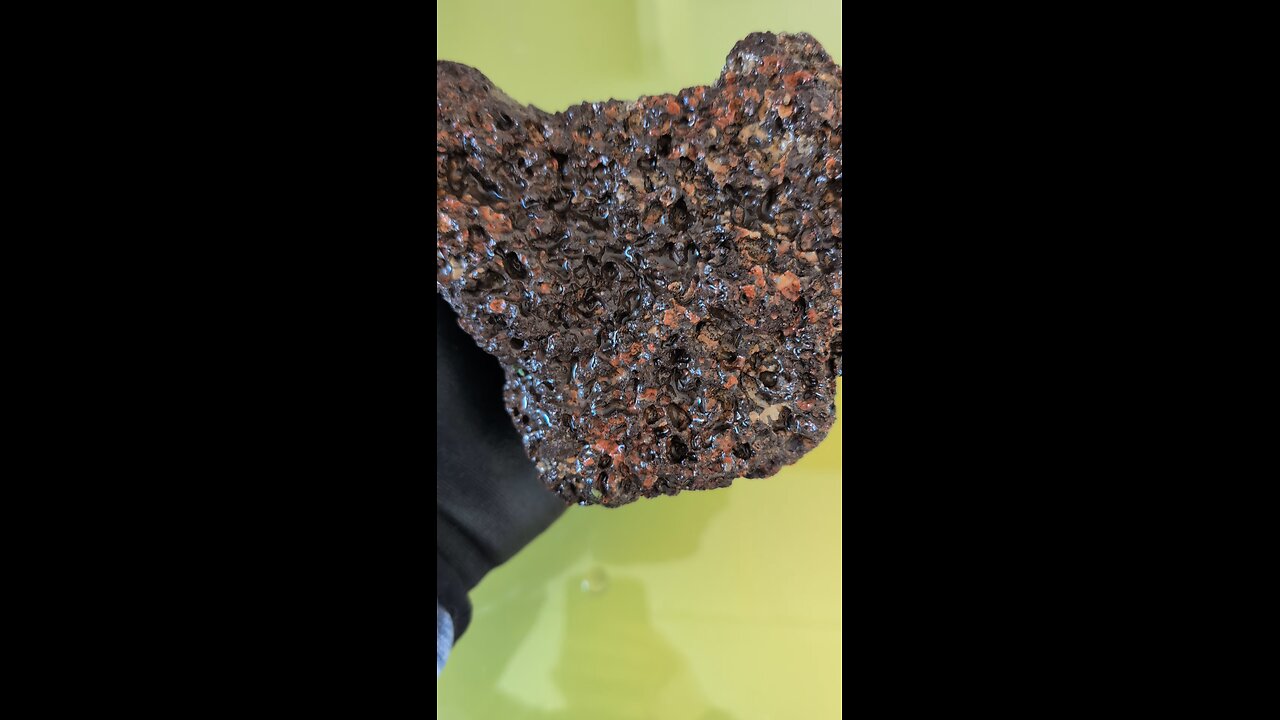Premium Only Content

Lavarock!
Lava rock, often referred to simply as "lava," is a term commonly used to describe various types of igneous rocks that form from the cooling and solidification of molten lava on the Earth's surface. Here are some key details about lava rock:
Formation: Lava rock forms when magma, which is molten rock beneath the Earth's surface, erupts as lava during a volcanic eruption. Once exposed to the cooler temperatures at the surface, the lava cools and solidifies into rock.
Types of Lava Rock:
Basalt: The most common type of lava rock, formed from low-viscosity, mafic lava. It's dark, fine-grained, and can have a vesicular (full of small holes) texture if gas escapes during cooling.
Andesite: Intermediate in composition, often found in subduction zones. It's lighter in color than basalt and can have a porphyritic texture.
Rhyolite: Formed from high-viscosity, felsic lava, typically light in color with a fine-grained or glassy texture. It often forms during explosive eruptions.
Pumice: A very light, porous form of lava rock with a high gas content, which can float on water due to its low density.
Obsidian: A volcanic glass that forms when lava cools very rapidly, preventing crystal growth. It's usually black but can have other colors due to impurities.
Texture: The texture of lava rock varies widely:
Aphanitic: Fine-grained, where individual crystals are not visible to the naked eye due to rapid cooling.
Vesicular: Contains gas bubbles or vesicles, common in basalts and pumice.
Glassy: Like obsidian, where the rapid cooling prevents crystal formation.
Porphyritic: Contains larger crystals (phenocrysts) within a finer matrix, indicating a two-stage cooling process.
Color: The color can range from black or dark gray (basalt, obsidian) to light gray, pink, or even white (rhyolite, pumice), depending on the composition and cooling rate.
Uses:
Landscaping: Lava rock is often used in gardens for its aesthetic appeal and drainage properties.
Construction: Crushed lava rock can be used as aggregate in concrete or as a building material.
Art and Jewelry: Some types, like obsidian, are used in crafting jewelry or decorative items.
Abrasives: Pumice, due to its abrasive nature, is used in various cleaning and polishing applications.
Geological Significance: Lava rocks provide evidence of volcanic activity, helping geologists understand volcanic processes, the composition of the Earth's mantle, and the history of volcanic eruptions in a region. They are also studied for their role in soil formation and ecosystem development after volcanic events.
-
 16:38
16:38
RTT: Guns & Gear
18 hours ago $0.06 earnedExtar EP9 Review: The Best Budget 9mm PCC?
1563 -
 7:53
7:53
Rethinking the Dollar
10 hours agoMass Firings in Tech: The Real Agenda Behind 166,000 Cuts
2801 -
 1:02:28
1:02:28
BonginoReport
5 hours agoFeds Monitor Threats Ahead of Kirk Memorial - Nightly Scroll w/ Hayley Caronia (Ep.138)
212K122 -
 55:51
55:51
Candace Show Podcast
4 hours agoWho Moved The Camera Right Above Charlie's Head? | Candace Ep 239
71.1K437 -
 LIVE
LIVE
LFA TV
23 hours agoBREAKING NEWS ON LFA TV! | FRIDAY 9/19/25
681 watching -
 13:00:46
13:00:46
Total Horse Channel
13 hours ago2025 WDAA Western Dressage World Championship Show | Day Four | Arena One
10.7K -
 2:08:52
2:08:52
The Mike Schwartz Show
6 hours agoTHE MIKE SCHWARTZ SHOW Evening Edition 09-19-2025
32K4 -
 21:49
21:49
Jasmin Laine
7 hours agoCBC Panel TURNS on Liberals—"Carney DOESN'T Know What He’s Doing"!
22.1K22 -
 LIVE
LIVE
Mally_Mouse
2 days agoFriend Friday!! 🎉 - Let's Play! - 🎂 ITS MY BIRTHDAY!!🎂
126 watching -
 2:05:09
2:05:09
Quite Frankly
7 hours agoFriday Night News & Reviews | Sal The Butcher, Cultivate Elevate 9/19/25
18.3K4